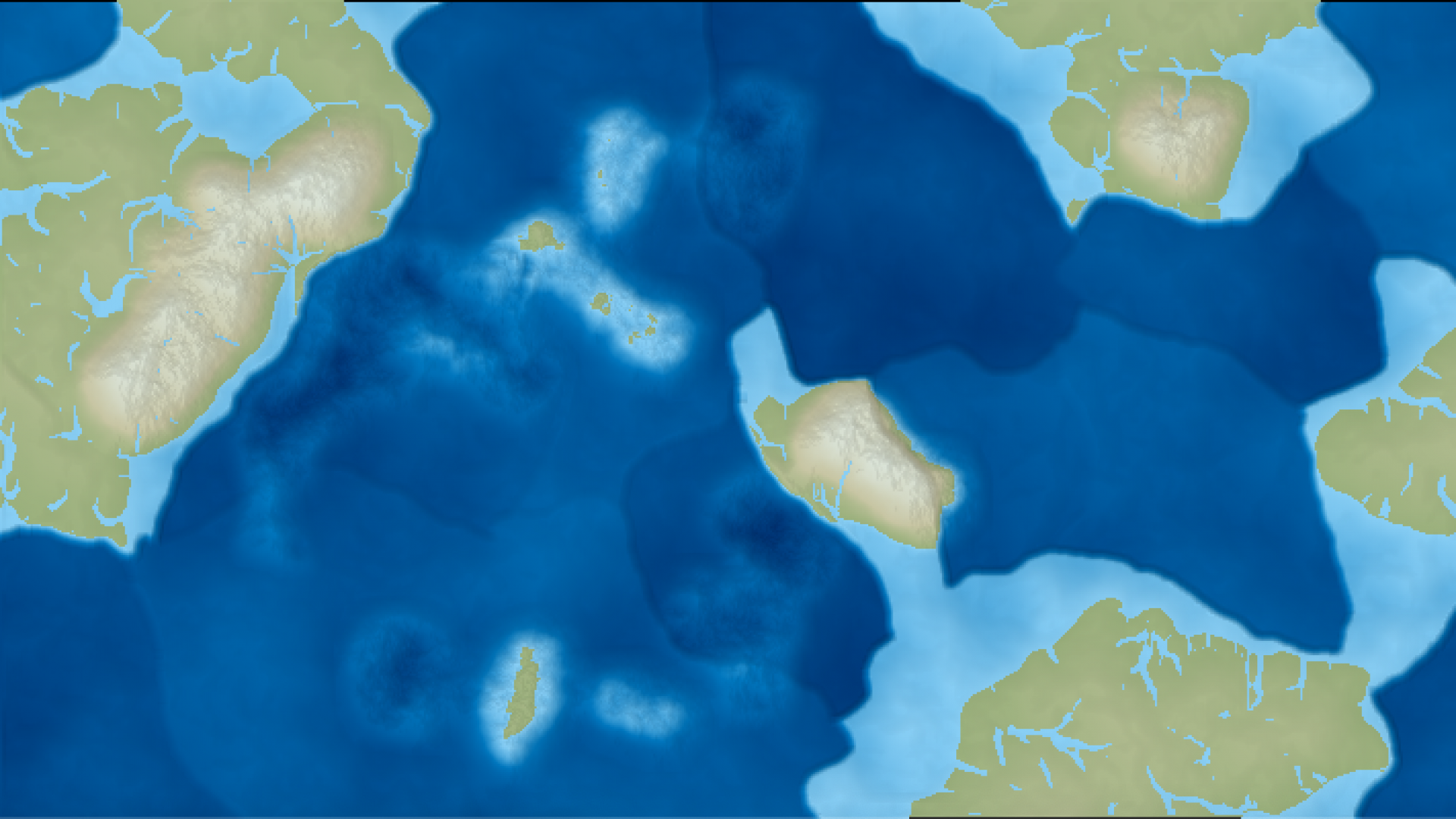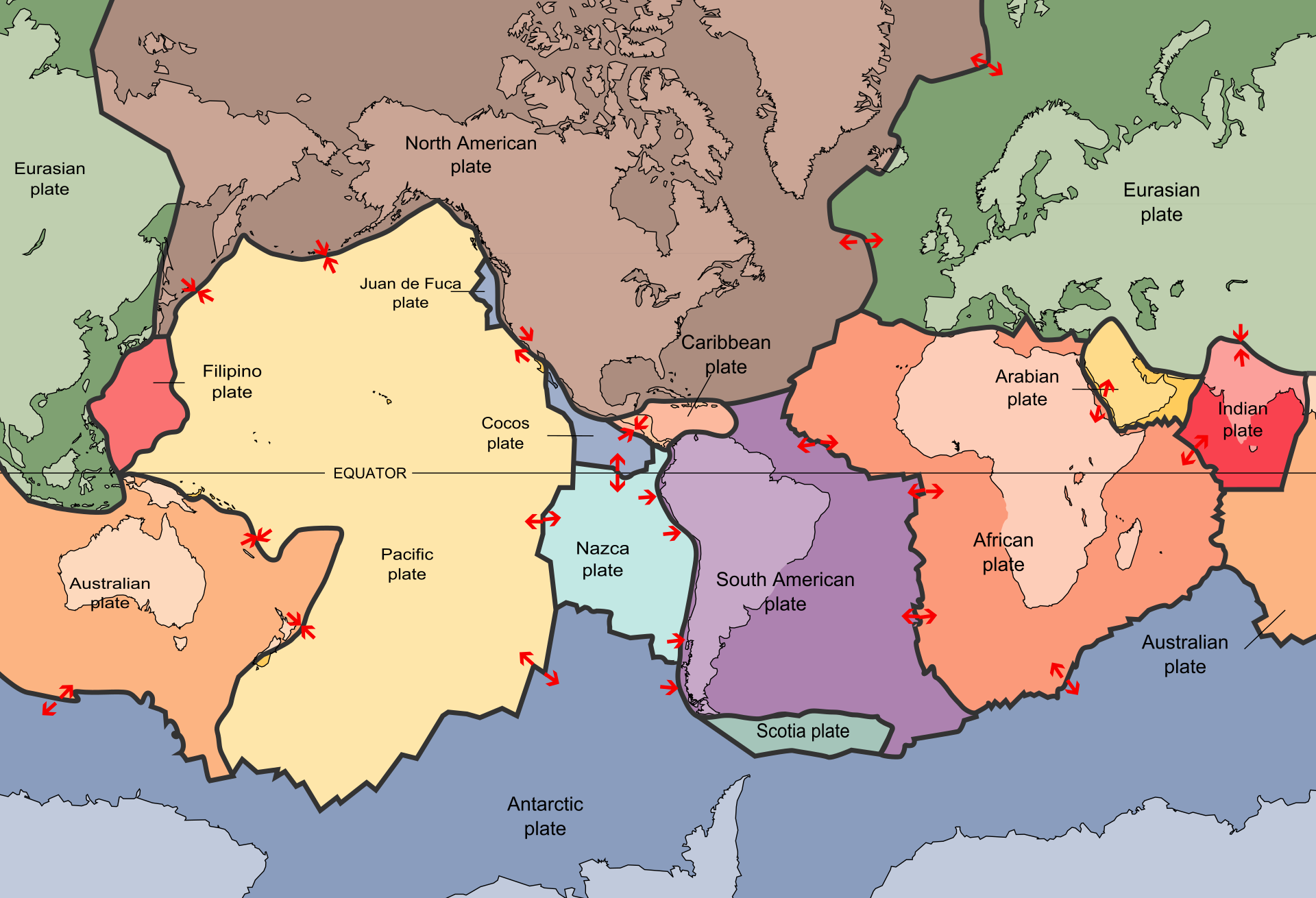When I began researching tectonic plates, the first thing I learned was how little we know about them. It seems the main cause of our lack of understanding is that we simply can’t see tectonic plates. I find it strange and amusing that we can travel all over the world in hours, and we’ve reached million miles into space, but we can barely scratch its surface — we’ve never dug even 10 miles into the Earth’s crust. The density, heat, and sheer mass of Earth makes such a venture prohibitively difficult. Add onto that the enormous scales of size and time over which tectonic plates operate, and we have no way to measure or model tectonic plates. All we can do is piece together disparate pieces of indirect information — the shapes of continents, locations of fossils, the shape of the Hawaiian islands.
Recently there have been attempts to create tectonic plate simulations on supercomputers, but we’re still in the early stages. Perhaps in my lifetime we’ll figure out how these rocks floating on lava really work. That said, I’ll summarize what I’ve found on current tectonic plate theory.
What Are Tectonic Plates?
The Earth is made of three primary layers: the core, the mantle, and the crust. We won’t worry about the core, as its effects on our crust life are rather uninteresting. The mantle is mostly liquid rock (magma) and makes up 84% of Earth’s volume. Floating on top of this sea of liquid rock is the lithosphere, a combination of the crust and the solid bits of the upper mantle. The lithosphere is broken into tectonic plates. There are two main types of tectonic plates.
Continental plates are made of thick continental crust, which is generally older and has a more diverse composition than oceanic crust.
Oceanic plates are made of thin oceanic crust, which is generally younger and of more uniform composition (mafic rock rich in iron and magnesium) than continental crust.


Forces Moving Tectonic Plates
Why isn’t the lithosphere just a single, solid shell? The same forces that move tectonic plates around are responsible for breaking up chunks of the lithosphere that get to big, such as supercontinents (e.g. Pangaea, the most recent one). There are three main forces pushing tectonic plates around.
Mantle Convection Cells: Just like how hot air rises, driving circulation and weather patterns above the surface, hot sections of the mantle (heated by the core) rise toward the surface of Earth, driving convection cells. These currents tangentially drag tectonic plates from below. They also drive tectonic plates apart (or even break up a plate) over the upward section of the convection cell.
Subduction: When two plates collide, one plate is driven under the other. The end forced down into the mantle gains momentum and drags the rest of the lower plate behind it like a heavy rope falling off a table. A plate end falling into the mantle tends to align with the downward section of a mantle convection cell.
Hotspots: These are small spots on the mantle which are unusually hot and don’t move with tectonic plates. They aren’t well understood.
When I was in elementary school, mantle convection cells were believed to be the most important force driving tectonic plates. Now it’s believed subduction is in fact the strongest force; however, it’s a bit like the chicken-or-the-egg problem: subduction only happens after plates have already collided. Exactly how much plates affects cells vs cells affecting plates is widely debated.
Faults
Wherever tectonic plates meet is called a fault. There are several major types.
Divergent: Two plates are driven apart. Magma wells up from the mantle, forming new oceanic crust. The East African Rift and the mid-Atlantic ridge are examples of this.
Oceanic Convergent: Either between two oceanic or an oceanic and a continental plate, this fault results in the subduction of one of the plates. This results in a coastal mountain range on the upper plate and an oceanic trench where the oceanic plate is subducted (e.g. Marianas Trench).
Continental Convergent: Similar to oceanic convergent, except no trench forms. The Himalayas are the result of the Indian plate being subducted under the Eurasion plate.
Transform: These faults occur when two plates are sliding past each other, neither converging nor diverging. They are the most difficult to model and predict. The San Andreas fault is an example of this.
The Wilson Cycle
The Wilson Cycle is a model for a lifecycle pattern tectonic plates can go through. It doesn’t account for everything, but I think it’s far more than what I can simulate.
- A hotspot breaks up a continental plate, creating a divergent fault.
- An ocean basin forms from magma supplied from the divergent fault.
- On one side, the ocean begins to be subducted under continental crust.
- The entire ocean basin is subducted. It continues to fall into the mantle.
- The continents continue to converge, driven by the momentum supplied by subduction, creating a mountain range.
- Over time, the mountains erode to sea level, leaving behind a warped single continental plate.
Modeling Tectonic Plates
I could find few small-scale attempts to model tectonic plates. Some previous works I considered were this paper by Benedetti and Minto, a spherical simulation, and Amit Patel’s previous work (unrelated to tectonic plates). The closest to what I want ended up being this thread on Cartographer’s Guild from 2009. Unfortunately the code link was broken, but the general approach was outlined in the thread.
The general approach to tectonic plates is to generate some sort of graph, either distorted hexagons or Voronoi cells, then assign tectonic plates and simulate faults. I decided to use Voronoi cells, as they seemed feasible.
Then I distorted the plate boundaries with noise and assigned the plates a velocity. The velocity is used to calculate the convergence or divergence at faults. I created generic altitude profiles for different types of faults with randomizable parameters.
Eventually I’d like to go another layer and model the mantle and plates moving over time like the Wilson cycle, as this leads to characteristic mountain/trench patterns that my model and Perlin noise can’t attain. That’ll go into the “for later” bin.
Next Up
Let’s do some math and coding and generate Voronoi cells.
Resources
Wikipedia
http://csmgeo.csm.jmu.edu/geollab/vageol/vahist/plates.html
http://csmgeo.csm.jmu.edu/geollab/vageol/vahist/wilsonsimp.html



One thought on “Terrain Generation 2: Tectonic Plate Science”
Comments are closed.